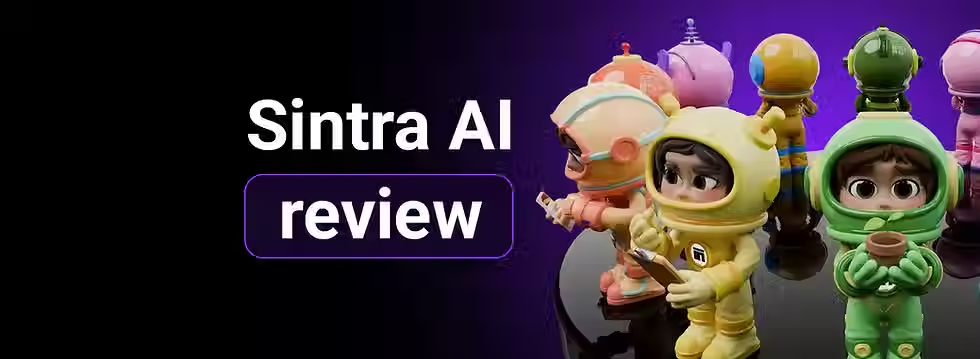Best AI Helper 2025 | Features, Uses & Productivity Boost
- Abhinand PS
.jpg/v1/fill/w_320,h_320/file.jpg)
- 50 minutes ago
- 3 min read
Artificial Intelligence has entered nearly every part of modern life, and in 2025, AI helpers are no longer futuristic luxuries—they are everyday productivity partners. Whether you’re a student, business owner, freelancer, or professional, an AI helper can automate repetitive tasks, suggest smarter decisions, and even draft reports or presentations in minutes.
In this blog, we’ll explore how AI helpers work, why they’re essential in 2025, their key benefits, and expert tips to help you get the most from your AI-powered assistant.

What is an AI Helper?
An AI helper, also known as an AI assistant, is a smart digital tool powered by machine learning and natural language processing. Unlike traditional apps that follow rigid commands, AI helpers can understand context, adapt to behaviors, and provide personalized assistance.
From handling emails and writing content to managing schedules and conducting data analysis, AI helpers are designed to free up time and reduce human error.
Why You Need an AI Helper in 2025
With workplaces moving faster and digital responsibilities increasing, AI helpers have become indispensable. Here’s why:
Time Savings: Automate repetitive tasks like data entry or meeting scheduling.
Instant Insights: Get real-time analytics and forecasts for better decision-making.
Cost Efficiency: Replace multiple tools with a single AI-powered system.
Support for All Users: Works equally well for students, professionals, and enterprises.
Personalized Productivity: Learns your daily habits and optimizes workflows.
Key Features of AI Helpers in 2025
Intelligent Task Automation
Automates repetitive tasks such as responding to emails, drafting reports, and scheduling.
Conversational AI
Engages in human-like conversations to answer queries, provide summaries, or troubleshoot problems.
Data-Driven Recommendations
Delivers predictive insights for businesses, including demand forecasts and market trends.
Seamless Integrations
Works with popular apps like Google Workspace, Slack, Trello, and CRM tools.
Quick Facts Table – AI Helper Benefits
Feature | Benefit in Everyday Use |
Task Automation | Saves hours on admin work |
Personalized Insights | Smarter, data-backed decisions |
Conversational Interface | Easy interaction without commands |
Productivity Boost | Increases efficiency by 20–30% |
App & Tool Integrations | Centralized, streamlined workflows |
Real-World Examples
Students use AI helpers for essay drafting, study planning, and real-time research summaries.
Freelancers rely on them for proposal writing, client management, and invoicing.
Businesses deploy AI helpers for workflow automation, employee onboarding, and customized customer engagement.
Healthcare practitioners use AI assistants to manage appointment scheduling and patient record insights.
Expert Tips to Get the Most Out of AI Helpers
Start Small: Begin with task automation like scheduling or reminders before moving to deeper analytics functions.
Use Integrations: Connect your AI helper with cloud storage and productivity apps to maximize efficiency.
Customize Workflows: Adjust settings so the AI learns your preferences for faster results.
Monitor Accuracy: Regularly cross-check outputs—especially for data-heavy work.
Update Frequently: Keep your AI tool updated to unlock new features and security benefits.
Internal and External Resources
Learn more about productivity automation on abhinandps.com
Read about future AI governance at OECD AI Policy
Try a leading AI Helper platform here
Frequently Asked Questions (FAQ)
1. How does an AI helper differ from tools like Siri or Alexa?
Unlike basic voice assistants, AI helpers in 2025 are built for deep productivity—covering automation, content creation, analytics, and integrations beyond simple commands.
2. Are AI helpers safe for business use?
Yes. Most AI helper platforms are compliant with global data security frameworks and offer advanced encryption to secure sensitive data.
3. Can an AI helper replace human employees?
Not entirely. AI helpers are designed to assist and enhance human productivity, not replace strategic roles. They handle repetitive or data-heavy tasks, allowing humans to focus on creative and strategic thinking.
Final Thoughts
In 2025, an AI helper is not just a tool—it’s your productivity partner. With its ability to automate tasks, provide insights, and streamline operations, it’s quickly becoming a must-have for individuals and businesses alike.
If you’re looking to save time, reduce costs, and work smarter, adopting an AI helper is one of the best decisions you can make this year.



Comments